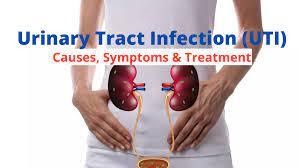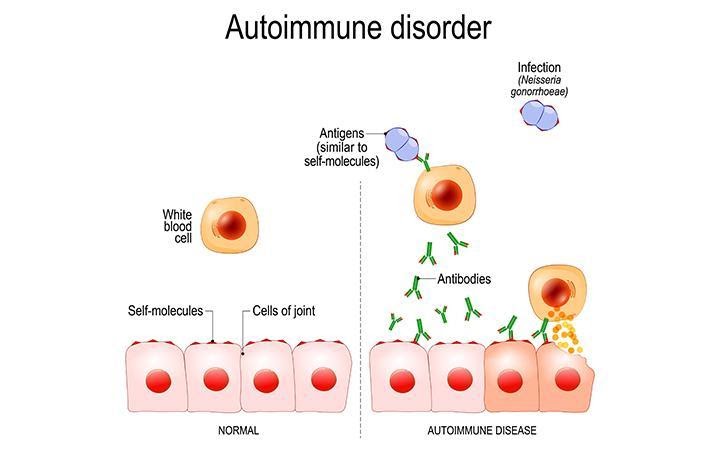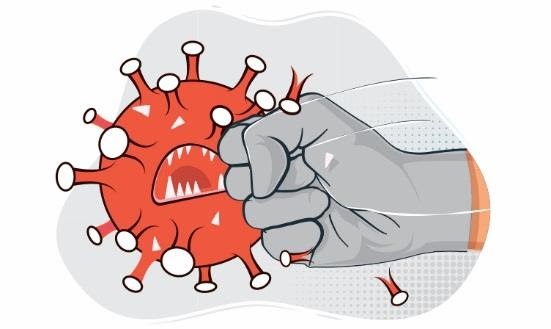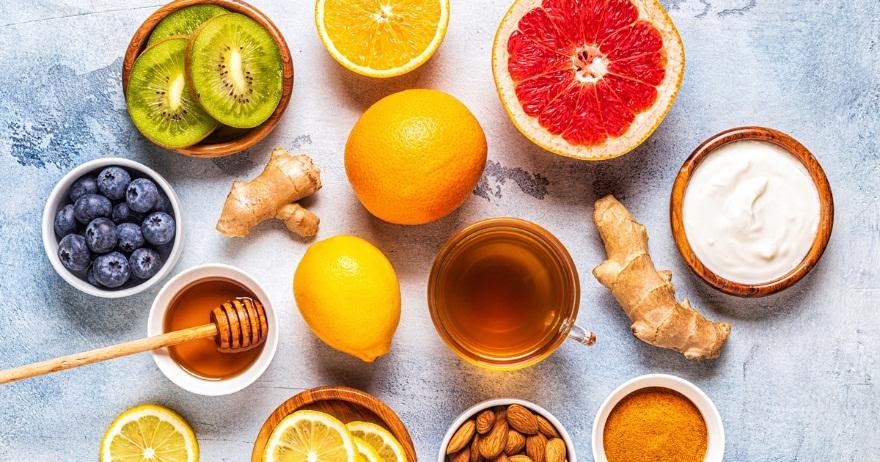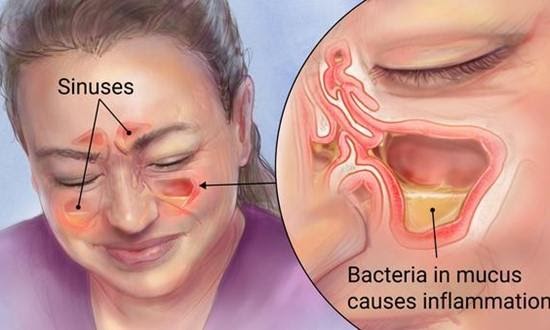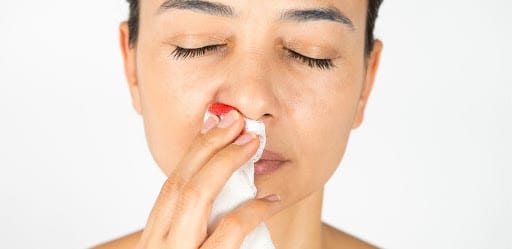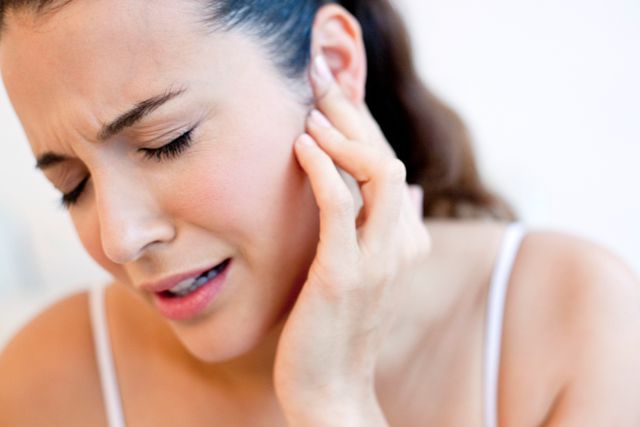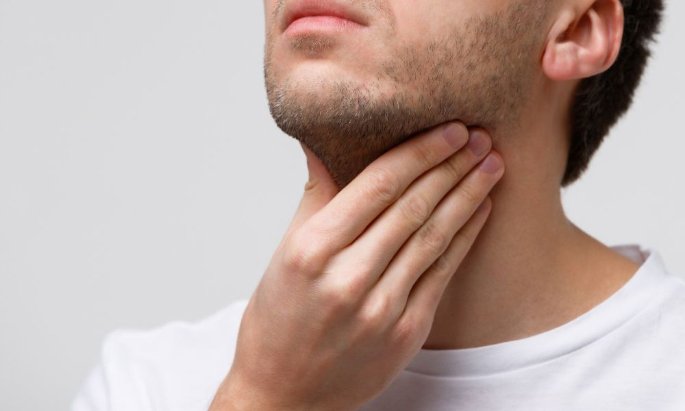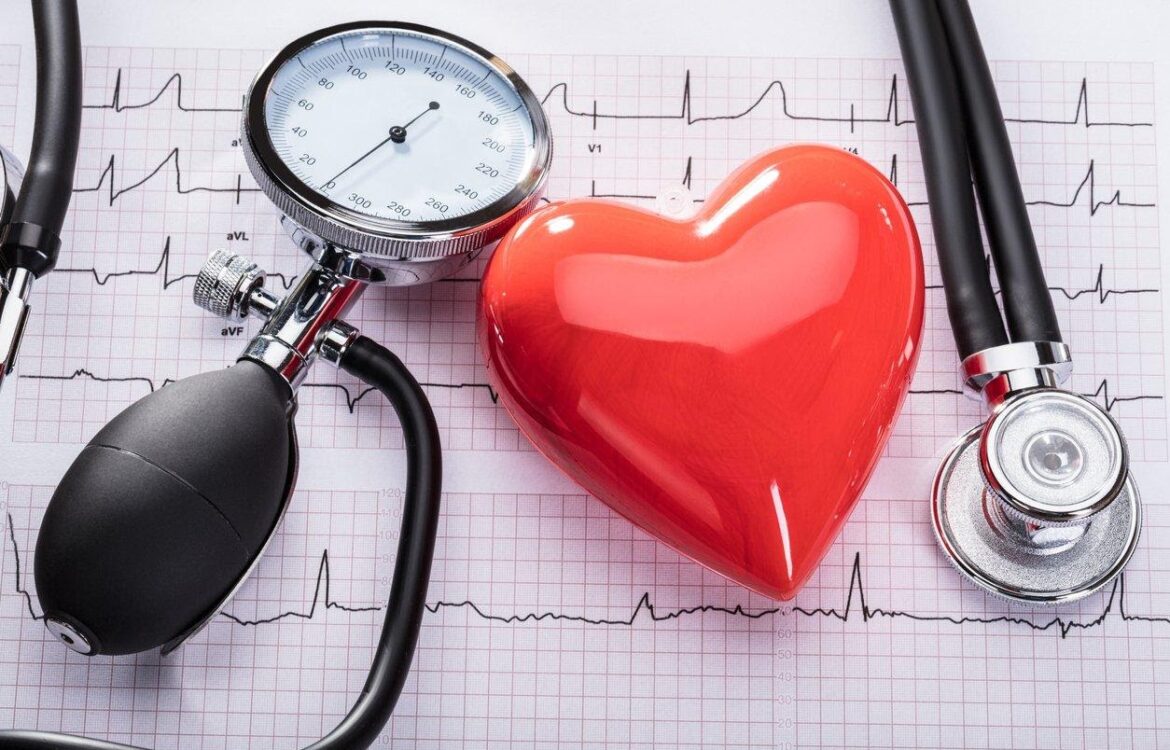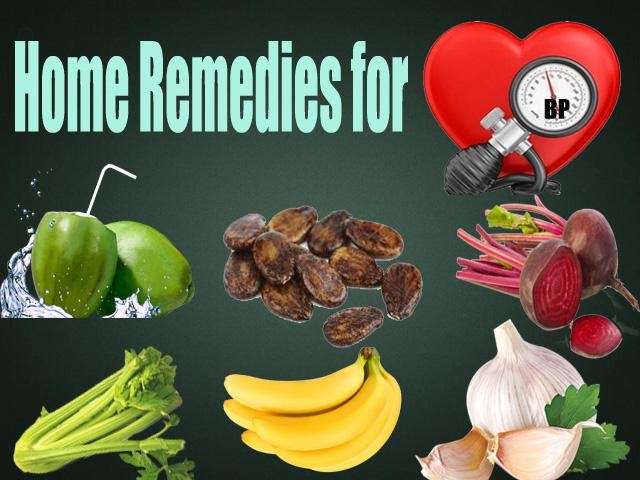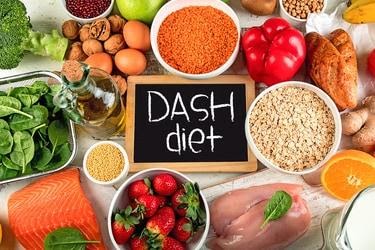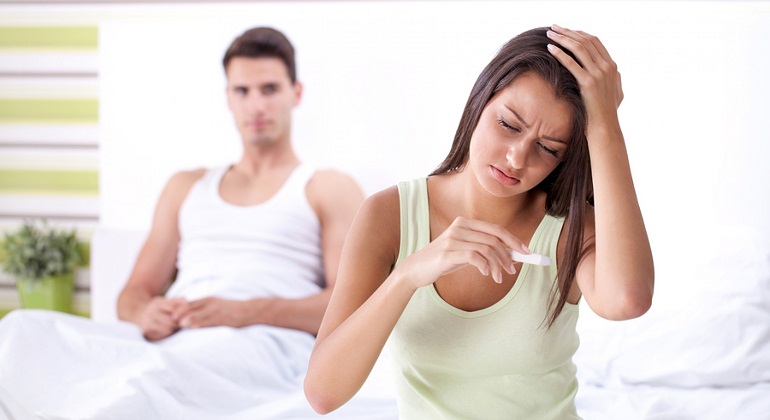Author Archives: Dr. Vaidya Karanvir Singh
URINARY TRACT INFECTION
- June 8, 2021
- Posted by Dr. Vaidya Karanvir Singh
- 0 Comment(s)
INTRODUCTION-
Symptomatic presence of micro-organisms within the urinary tract i.e. your kidneys, ureters, bladder and urethra. Most infections involve the lower urinary tract – the bladder and the urethra. Infection limited to your bladder can be painful and annoying. Serious consequences can occur if a UTI spreads to your kidneys.Women are at greater risk of developing a UTI than are men.
CAUSES OF UTI-
- Main cause of UTI is bacteria which reside around anus during infection these bacteria can move to urethra further to bladder and spread into kidneys.
- Excessive use of spermicidal contraceptives like diaphragm and ointments.
- Sexual intercourse are also responsible for UTI.
- Unhygienic conditions increase the chances of urinary tract infections
- Hospitals are also major cause of urinary tract infections.
- Some complications such as spinal cord injury and early menopause are also associated with UTI
PATHOGENESIS-
Four routes of bacterial entry to urinary tract-
ASCENDING INFECTION-
- It is a most common route.
- Organisms ascend through urethra into bladder
HEMATOGENOUS SPREAD-
- Blood borne spread to kidney
- Occurs in bacteraemia mostly S.aureus
DIRECT EXTENSION FROM OTHER ORGANS-
- Pelvic inflammatory diseases
- Genito-urinary tract fistulas
LYMPHATOGENOUS SPREAD
- Men -Through rectal and colonic lymphatic vessels to prostrate and bladder.
- Women-through periuterinelymphatics to urinary tract.
SIGN AND SYMPTOMS-
- Urgent and strong need to urinate
- burning sensation during urination
- pressure in the lower pelvis
- increase frequency of urination
- passing small amounts of urine
- incomplete feeling after urination
- Painfull urination (dysuria)
- cloudy appearance of urine
- blood in the urine that appears red, bright pink or cola-colored
- There is a Strong-smell in urine
- High grade fever and mental changes
- Pelvic pain, in women — especially in the center of the pelvis and around the area of the pubic bone
Types of urinary tract infection
Each type of UTI may result in more-specific signs and symptoms, depending on which part of your urinary tract is infection
Kidneys (acute pyelonephritis)
- Upper back and side (flank) pain
- High fever and chills
- Suprapubic tenderness
- White blood cell casts in urine
- Shaking and chills
- Nausea and Vomiting
Bladder (cystitis)
- lower Pelvic pressure
- Lower abdomen discomfort
- Frequent and painful urination
- Blood in urine
Urethra (urethritis)
- Burning sensation during urination
- vaginal Discharge
RISK FACTORS –
Aging
- Diabetes mellitus
- Impaired urine system
- Urine retention
Females
- Shorter urethra
- Use of Contraceptives
- After menopause
- Incomplete bladder emptying with age
- Sexual intercourse
Males
- prostatic hypertrophy
- Bacterial prostatis
Other-
- Use of catheter
- Pelvic region surgery
- Suppressed immune system
- Blockage in urinary tract
- Urinary tract abnormalities
DIAGNOSTIC CRITERIA-
- Urine culture test
- Imaging techniques like CT scan and MRI
- Analyzing a urine sample
- Microscopic examination of urine
- Ultra sound
LINE OF TREATMENT-
IN MODERN SCIENCE-
Symptomatic UTI- give an antibiotic therapy-
- Trimethoprim/sulfamethoxazole (Bactrim, Septra, others)
- Fosfomycin (Monurol)
- penicillins and cephalosporins
- Nitrofurantoin (Macrodantin, Macrobid)
- Cephalexin (Keflex)
- Ceftriaxone
Asymptomatic UTI-
- No treatment required except in special situations
Frequent infections-
If you have frequent UTIs, your doctor may make certain treatment recommendations, such as:
- Take Low-dose antibiotics, initially for six months but sometimes longer
- Self-diagnosis and treatment, if you stay in touch with your doctor
- A single dose of antibiotic after sexual intercourse if your infections are related to sexual activity
- Vaginal estrogen therapy if you’re postmenopausal
Non specific therapy-
- More water intake
- Maintaining acidity of urine by fluids like canberryjuice
Anti microbial therapy-
- Elimination of infection
- Relief of acute symptoms
- Prevention of recurrence and long term complications.
AYURVEDA APPROACH-
In Ayurveda it is believed that there are three energies vata, pitta and kapha in the body which are responsible for the good health. UTIs are due to the imbalance of tridoshas. As per Ayurveda UTI comes under “mutravaha srotas’’ roga. These infections cause inflammation, itching and pain in urinary tract. There are various herbs present in Ayurveda which helps in UTI.
Examples-
- Tribulusterestris (Gokshura)
- Boerhaaviadiffusa ( Punarnnava)
- Asparagus racemosus (Shathavari)
CHIKITSHA SUTRA-
1. Internal use of medicated ghees and oils –
- This procedure has ability to transport therapeutically effective components to different tissues of Urinary Tract.
- Herbal /medicated oil and ghees are also helps in achieving tone and neurological control of bladder musculature.
2. Vamana Karma–
- This procedure done only in kapha predominant conditions.
3. Virechana /purgation therapy–
- Virechna karma is a cleansing procedure.
- This is a most significant step of UTI treatment.
- It is performed by giving some purgative herbs.
- It helps to eliminate pathways of Vatha humor and alleviates Pitta predominant symptoms.
4. Steaming /heating procedures-
- In Pitta predominant conditions, steaming is not required.
5. Basti/ Medicated enema-
- This procedure is useful in cleaning the urinary tract.
- It is most effective in Ayurvedic treatment bringing cleansing of channels or srothas spread all over the body.
- This is very effective in aggravated Vatha through removal of blockage in pathways of vatha humor thus enable us to calm Vatha aggravation.
6. Uttara basti-
- This is different from common vasthi in the way of administration, quantity and in ingredients.
- Medicine is applied to urinary bladder through urethral route.
- Uttarbasti is more effective treatment in chronic UTI.
YOGA-
- Bhujangasana
- Surya namaskar
- Dhanurasana
HOME REMIDIES FOR UTI–
- Drinking sufficient quantities of water should become a habit.
- Take vitamin-C enrich diet.
- Wear cotton and loose fitting innerwear and clothing.
- Applying a heat pad to the bladder or pubic area can help to relieve pain and discomfort temporarily.
- Use dry clothes after bath.
- Women should follow good personal hygiene practices especially during menses.
- Take probiotics
- Urinate when needs arries.
- Consume cranberry juice
- Change menstrul pads, tampons and menstrual cups frequqntly.
ROLE OF AYURVEDA IN AUTOIMMUNE DISEASES
- June 8, 2021
- Posted by Dr. Vaidya Karanvir Singh
- 0 Comment(s)
What Is An Autoimmune Disease?
Autoimmune disease is the disorder in which the immune system, which generally defends the body against the disease, takes healthy cells also as a foreign; as a result immune system attacks the healthy cells. The autoimmune disease and progression vary as per individual.
In reaction to an unbeknown trigger, the immune system may begin making antibodies that instead of fighting infections, attack the body’s own cells. Management for autoimmune diseases nearly focuses on decreasing immune system activity.
Types of Autoimmune Diseases-
- Rheumatoid arthritis
- Scleroderma
- Vitiligo
- Inflammatory bowel disease (IBD)
- Systemic lupus erythematous(SLE)
- Guillain barre syndrome
- Dermatomyositis
- Type 1 diabetes
- Grave’s disease
- Myasthenia gravis
- Vasculities
- Hashimoto’s thyroiditis
Role of Ayurveda In Autoimmune Diseases-
- “Ayurveda perceives autoimmune diseases in a slightly different way.
- According to Ayurveda, the immune cells do not attack body cells suddenally, but to intercede against detrimental metabolites known as ‘Ama’.
- To discover the root cause of autoimmune disorders, Ayurveda looks at what caused the inflammation and works backwards: inflammation is caused by lack of cellular communication; the breakdown in communication is due to cells being covered with Ama (toxic waste product).
- The Ama is caused by low Agni (digestive fire) and low Ojas (immunity). Thus the root causes of auto-immune disorders are poor digestion capacity and weak immune system.
- Hence the Ayurveda management focuses on restoring Agni (digestive fire) and Ojas (immunity). By enhancement of digestive fire and immunity, one can naturally reverse the disease process and restore balance to the system.
- Our primary goal is to stop the progress of the disease along with symptomatic relief and 2nd is subsequently try to reverse the condition.
- Treatment of the underlying cause, resolving the problems and the rehabilitation process by stimulating the vitality of the body, together with forms the Ayurvedic treatment of autoimmune disorders.
- A thorough examination of the current course of the autoimmune disease and how the disease manifested in the past is essential to identify the cause of the disorder. One may requisiteness a little more patience than conventional treatments.
- The great benefits are that the results of Ayurveda are permanent in nature and practically always promising.
- Ayurveda describes countless of herbs as immunomodulators which can help you in preventing autoimmune disorders while eliminating ama from your body.
- These immunomodulatory herbs can act as immunostimulants, immune adjuvants as well as immunosuppressants when needed, thus, regulating and balancing the activity of your immune cells depending on your body’s condition.
- Therapies such as Shiro Basti, janu basti, patra pinda sweda, Abhyangam and shashtic shali pinda sweda along with Panchakarma treatments are decided after a detailed assessment of the doshas and consultation with the Doctor.
- The Yoga sequence is decided based on the course of progression of the Immunity disorder and includes Supta Virasana, Salambha Sirsasana, Viprita Dandasana and Viprita Karni.
AUTOIMMUNE PROTOCOL DIET –
INCLUDE-
- Seasonal fruits in moderation
- Take Green leafy vegetables
- Consume tubers such as sweet potatoes, yams, etc.
- Add some anti-inflamatory Herbs and spices such as ginger, garlic basil, cilantro, lemongrass, sage, turmeric, cinnamon, bay leaves, cloves, saffron etc. in your diet.
- Take healthy fats such as coconut oil, or olive oil.
- Add organ meat,poultry, Fish and other seafood in your diet. which is least processed.
- Take herbal teas made of ginger, chamomile, mint, etc.
- Eliminate added sugars
AVOID-
- Grains like rice and wheat
- Curd and processed milk products
- Egg and Red meat
- Legume and seeds
- Nuts and Nightshade vegetables
- Processed vegetable oils
- Caffeine and Alcohol
- Refined and processed sugars
- Artificial sweeteners and Food additives
But in the end, “prevention is better than cure”. So stay healthy by incorporating a healthy diet and exercise into your lifestyle.
HOW TO INCREASE IMMUNITY AFTER COVID-19 RECOVERY
- June 7, 2021
- Posted by Dr. Vaidya Karanvir Singh
- 0 Comment(s)
- The Novel Coronavirus affects our immune system till a great extent so it’s important to get a healthy immune system back by doing some Healthful measures.
- At this point of time when your immune system has taken a set back and is in a weaker state after being infected with the deadly coronavirus there is need of Good nutrition for maintaining good health status.
- After combating an infection body needs more energy and increase amount of fluids, hence it is very essential to fuel the system with the proper amount of nutrients than a person usually need. Even if a person have recently recovered from COVID-19, than they should follow a strict diet and healthy lifestyle. For speeding up the recovery process there are a lot of foods.
- The consequence of this fatal infection is many like it makes you exhausted, tired and drains out the person’s physical and mental energy. The people who have recently recovered from the coronavirus need more energy, proteins, vitamins and minerals to speed up the recovery process and this would essentially support you to strengthen immunity back and rebuilt the stamina and energy.
Healthy ways to build up your immune system
Following general health guidelines is the only best step a person can take toward keeping your immune system working properly naturally. Choosing a healthy lifestyle is a first line of defense.
Your immune system and as well as every part of your body functions better when it is protected from certain environmental assaults and prop up by healthy-living strategies these are as follows-
- Quit Smoking
- Your diet must be high in fruits and vegetables.
- Exercise on a regular basis- Practice Yoga and Pranayama.
- Healthy weight maintenance.
- Avoid alcohol or drink in moderation only.
- Get adequate amount of sleep (8hours).
- Take steps to avoid infection like washing your hands, frequently and cooking meals thoroughly
- Maintain social distancing norms, wear mask and gloves.
- Minimize your stress
Some Detail description to rejuvenate your Immune system in Post-Covid recovery are as follows-
Correct your sleep habit-
- Sleep and immunity are inter-related with each other.
- Inadequate or poor quality sleep is linked to a higher susceptibility to sickness.
- Getting adequate rest may strengthen your natural immunity. One should sleep more when you are sick to allow your immune system to better fight the illness.
- Normal Sleep Duration- Adults 7hours or more hours of sleep during night time, Teenagers- 8–10 hours and Younger children and infants- up to 14 hours.
- Avoid sleeping during the day time.
- Try to avoid using cell phones, TV, and computer as it may disrupt your circadian rhythm, or your body’s natural wake-sleep cycle.
Choose Healthy-
- The main focus for Post-COVID patients should be to consume foods that would help to rebuild muscles, raises the immunity and energy levels.
- Take Whole plant foods because they are rich in nutrients and antioxidants that may help you against harmful pathogens. For. Ex. -fruits, vegetables, nuts, seeds, and legumes etc.
- Choose fruits and vegetables that are rich in nutrients like vitamin C, which helps to reduce the duration of the common cold.
- It is recommended to take 5 servings of colored fruits and vegetables to get adequate vitamins and minerals.
- A person should eat whole grains like ragi, oats, and amaranth etc.
- Turmeric milk- Intake of milk mixed with half teaspoon of turmeric once a day helps to boost your immunity.
- Eat soft foods at small intervals and add amchoor in the food.
- Intake of protein rich diet like chicken, fish, eggs, paneer, soy, nuts, and seeds are highly recommended.
- Intake of Healthy fats like walnuts, almonds, olive oil, and mustard oil.
- Intake of fermented foods like Yoghurt or take a probiotic supplement to maintain your gut health.
- Limit or avoid added sugar or added Salt.
Keep the Stress Away-
- Take small amounts of dark chocolate with at least 70 percent cocoa to get rid of anxiety.
- Perform Yoga postures and Pranayama or Breathing exercises as per your tolerance this will provide you a healthy immune system and thus speed up the recovery process.
- Talk to friends or your loved ones not in text but with a group video call this will distress your mind and will make you happy.
- Try to be Satvik i.e. positive attitude towards dealing every aspect of life.
STAY HYDRATED-
- One should stay hydrated in order to maintain a good immune system and also for a good skin health.
- Provide proper hydration to your body i.e. 2 to 3 liters of water per day.
SINGLE HERBS
Some herbs which are easily available can be used in your daily life. These are beneficial in maintaining a healthy immune system and are as follow-
- Haridra or Turmeric
- Yashtimadhu or mulethi
- Maricha or Black Pepper
- Sonth or Dry Ginger
- Dalchini or Cinnamon
- Pippali or Long pepper
- Triphala- Haritaki, Vibhitaki, Amalaki
- Trikatu- Pippali, Sonth and Maricha
- Madhu or Honey
- Asparagus racemosus or Shatavari
HOME REMEDIES FOR SINUSITIS
- June 7, 2021
- Posted by Dr. Vaidya Karanvir Singh
- 0 Comment(s)
INTRODUCTION-
Sinusitis is known as pinas roga in Ayurveda. Chronic Cold and cough should not be left untreated, because it may lead to sinus and allergies. It may affect people of any age and sex. Kids suffering from cold and other viral infections are more prone to Sinusitis. The common conditions that cause sinus blockage include the common cold, nasal polyps (non-cancerous growth), allergic rhinitis or a deviated septum etc.
SINUSITIS-
It is an infection that causes swelling and inflammation of your nasal passages. It is normaly occurred due to germs (bacterial and viral) infection. Sometimes fungi causes it. People with weak immune systems are more prone to bacterial and fungal sinus infection. When you have a congested nose or coloured discharge with headache, facial pain and swelling around the sinuses, you may have sinusitis. It can be caused by infection, allergies, and particulate or chemical irritation of the sinuses.
SYMPTOMS
- Nasal congestion and obstruction
- Fever, common cold and flu
- facial tenderness and headache
- cough and bad breath
- Co Sore throat & fatigue
- Dental pain & loss of smell
- Nasal stuffiness & discharge
- Pressure or pain in the sinuses
- The sense of taste is reduced
HOME REMEDIES FOR MANAGING SINUSITIS-
Sinus problems can be uncomfortable. There are several home remedies that you can try for alleviate the pain ,inflammation and discomfort of sinus issues.
USE A NETI POT-
Nasal irrigation is a process often used to ease the symptoms of sinusitis. According to recent research, using a neti pot with a saline solution can get rid of some symptoms of chronic sinusitis.
Follow the directions supplied with your specific neti pot. Here are general directions:
- Fill the pot with the saline solution.
- Incline your head over the sink at a 45-degree angle.
- Insert the spout of the pot into your top nostril. Carefully pour the saline solution down that nostril.
- Repeat the process with the other nostril.
- Be careful to sanitize your neti pot after every use.
- Only used distilled water.
TAKE HOT WATER STEAM –
- Add clove oil or eucalyptus oil to the hot water and take steam twice a day.
- Spit out the secretions coming to your mouth.
- Have a salt water gargle after that to clear your throat.
- You can use electrical sunna also to take steam.
- Application of oil like ksheerbala or sesame oil over your face before taking steam.
- Chop some onions and boil it with water, take its steam.
USE GARLIC SNUFF-
Take five to six garlic buds, crush them and sniff them (inhale) or tie the crushed garlic in a clean cotton cloth so as to form a bolus, keep placing the bolus near your nose and inhale many times in a day.
USE HUMIDIFIERS-
- By using humidifiers in the rooms, the air will be humidified and made more liable for breathing.
- As per the instructions, be sure to clean them at regular intervals.
- A dirty filter can be a source of spraying mold into the air that surrounds your room.
USE HOLY BASIL STEAM-
- Vapour inhalation with decotion of holy basil or boiled water with it.
- Doing it for many days will help in sinusitis.
- It prevents from chronic forms of the disease.
EAT FOODS WITH ANTIBACTERIAL PROPERTIES–
- To fight the bacteria and virus add antibacterial food items like garlic, ginger, and onions to your diet.
- Candida or yeast is killed by garlic and olive leaf extract.
- You can also try drinking ginger tea.
- Add raw honey it boosts your immune system.
- Honey is loaded with antioxidant, and has antifungal and antibacterial properties.
USE CUMIN SEED POWDER-
- Take one tsp. of cumin seed powder and tie it in a clean cloth so as to form a bolus.
- Inhale the bolus by keeping it close to your nose and inhale many times in a day.
CLEAR THE SINUSES WITH EUCALYPTUS OIL-
- If you want to reduce sinus or upper respiratory infections, use eucalyptus oil externally on the temples or chest.
- You can also inhale eucalyptus oil via a diffuser when it is added to boiling water.
- Make sure you only use food-grade essential oils.
- Rub one drop of eucalyptus oil on the roof of your mouth, then drink a glass of water.
GET SOME REST-
- One of the most important things you can do when you are suffering from a sinus infection is to get some rest.
- Get adequate amount of sleep so you can get well quicker.
- This also helps your body to fight the infection.
- When you sleep, elevate your head with some extra pillows, this will help prevent the mucus from getting stuck in your sinuses at night.
GINGER AND TULSI DECOCTION-
- Boil one glass water with 7-8 leaves of holy basil leaves, 8-10 crushed powder of pepper, 10-15 gms of sugar candy and ginger small piece crushed.
- When ingredients reduce to half, strain it through a sieve or a sterile cloth and drink warm.
USE WARM COMPRESSES-
- Another effective home treatment you can try is to apply a warm compress.
- Applying moist, warm heat may help soothe facial and sinus pain.
- Place a wet, warm towels around your nose, cheeks, and eyes this may help in relieving some pressure from the sinuses.
- This procedure will also help clear the nasal passages from the outside.
MOISTURIZE YOUR SINUSES-
- Drape a towel over your head as you breathe in the vapor from a bowl of medium-hot water
- Keep the vapor directed toward your face.
- Take a hot shower, breathing in the warm, moist air.
- This will help ease pain and help mucus drain
Epistaxis (Raktagata pitta)
- June 7, 2021
- Posted by Dr. Vaidya Karanvir Singh
- 0 Comment(s)
Epistaxis likewise called intense discharge or nose drain is an ailment wherein draining happens from the nasal depression of the nostril. Nose drain can happen because of an injury to the nose, because of mishap, or injury to the inside of the nose from pricking. Nosebleed or epistaxis can be ordered by their site of start as front and back.
Raktapitta is a draining issue where in the blood vitiated by Pitta streams out of the hole of the body. Raktapitta is a specific sickness brought about by Raktava srotodusti.
This drain may happen from urdvajatrugata angas like nose, mukha, karna or from descending Adhoangas, gudmarg, mutra marg, yonimarg and so forth.
Samprapti of Nasagata Raktapitta (Epistaxis)
Pitta aggrivated by the above said nidanas and leaves its site and reaches Rakta (blood).
⇓
Being a mala (side-effect) of Rakta, the Pitta on getting blended in with Rakta accomplishes quantitative increment.
⇓
The Pitta thusly vitiates the Rakta. Because of the warmth of Pitta, the drava dhatu or the fluid part (liquid) of different tissues like Mamsa (muscles) Meda (fat) and so on, overflows out of their individual tissues and gets blended in with Rakta.
⇓
Due to the pressing factor of the blood and warmth of Pitta, the dividers of the blood vessels get harmed and the blood begins coursing through different openings of the body.
⇓
Bleeding happens through mouth, nose.
Causes of Nasagat Raktapitta
Ahara:-
- Rasa – Excessive utilization of Diet that is Amla (harsh), Katu (sharp), Lavana (saline).
- Guna – Intake of inordinate Vidahi (Improper assimilation prompting consuming vibe of food), Tikshna (Sharp),Ushna (Hot), Kshara (Alkalis)
Vihara:-
- Aatapa – Excessive openness to warm of sun
- Vaayama – Excessive actual exercise
- Vyavaaya – Excessive extravagance in
- sexual exercises
- Adhwa – Excessive strolling
Manas:-
- Shoka – Excessive distress
- Kopa – Anger
Other:-
- Excessive of Virechana.
Symptoms of Epistaxis
There are going with side effects and signs that demonstrate a fundamental issue. These include:
- Diligent dry nose
- Regular nasal contaminations
- Stodgy nose and shaded seepage
- Itchy, watery eyes
- Failure to smell and loss of taste
- Troublesome breathing through the nose
- Mouth breathing, particularly around evening time
Management of Epistaxis
- Santarpana/Apatarpana Chikitsa Mrudu, Sheetala, guna Ahara
- Madhura, Tikta, Kashaya Rasa Ahara Pradeha, Parisheka, Avagaha, Samsparshana and so on, outside coolants
- Pratimargaharana Chikitsa
- For Urdhvaga RaktapittaKashaaya and Tikta Rasa are criteria.
- Virechana ought to be given (us-ing Nishottara, Haritaki, Aragvadha, Indrayana etc.
- In Urdhvaga Raktapitta – Tarpana ought to be given to start with.
Preventions
- Try not to pick the nose.
- Apply greasing up ointment, for example, petrol jam (Vaseline), inside the nose; particularly in youngsters whose nosebleeds are most usually ascribed to crusting inside the nostrils.
- Try not to clean out the nose excessively hard, or too much of the time.
- Utilize a humidifier at high heights or in dry environments.
- To forestall repeating nosebleeds, keep away from effort or exhausting action for at least multi week after the past nosebleed.
Tinnitus (Karnanada)
- June 7, 2021
- Posted by Dr. Vaidya Karanvir Singh
- 0 Comment(s)
Tinnitus is the clinical term for “hearing” commotions in our ears. It happens when there is no external wellspring of the sounds.
Tinnitus is regularly called “ringing in the ears.” It might likewise seem as though blowing, thundering, humming, murmuring, murmuring, whistling, or sizzling. The clamors heard can be delicate or boisterous. The individual may even believe they’re hearing air getting away, water running, within a shell, or melodic notes.
In Ayurveda, Tinnitus is called as “Karnanada”. The main Dosa are involved in Karnanada is Vata Dosa. The term Karnanada is essentially gotten from two root words Karna and Nada.
Karna -Means ear or organ of hearing.
Nada – Sound or ringing in the ear.
Causes of Tinnitus
- Wax in ear waterway
- Keeps Hearing to noisy clamors
- Reccuring sinus contaminations center ear diseases
- Stress and long haul Insomnia
- Jaw mis-alingment
- Cardio vascular issue It is normally throbbing tinnitus however regularly with heart beat
- Because of Tomour on or compacting Auditory or Vestibular Nerve
- Head and neck wounds
- Long haul Migraines
- Long haul prescriptions like Antibiotics, anti-inflamatory pills (Damage Inner ear)
- Epilepsy
- Vascular tumors of center ear (Glomus tumor)
- Aneurysm and arterio-venous shunt around the ear
- Live bugs in the ear
Symptoms of Tinnitus
Tinnitus is regularly portrayed as a ringing in the ears, despite the fact that no outside solid is available. In any case, tinnitus can likewise cause different kinds of apparition commotions in your ears, including:
- Humming
- Thundering
- Clicking
- Murmuring
- Hissing
Complications of Tinnitus
Tinnitus influences individuals in an unexpected way. For certain individuals, tinnitus can essentially influence personal satisfaction. On the off chance that you have tinnitus, you may likewise insight:
- Weariness
- Stress
- Rest issues
- Inconvenience concentrating
- Memory issues
- Sorrow
- Uneasiness and peevishness
- Cerebral pains
- Issues with work and everyday life
Ayurvedic Management of Tinnitus
As tinnitus is a vata issue the Vata adjusting treatments and spices are valuable.
Diet for Tinnitus
- Vata impacts the development of contemplations, sentiments, prana streams, nerve driving forces, and liquids in the body. Consequently Vata adjusting Food Plan is suggested.
- Breakfast is normally desirable.Use hot oats like cream of rice or wheat or whatever other breakfast that is warm, smooth, and sweet.
- Take warm food, reasonably hefty in surface, add margarine and fat. prepared preferences are diserable.
- Decrease dry food varieties and harsh preferences. Utilize warm or high temp water and beverages. Crude nuts and nut margarines.
- Helpful Spices: cinnamon, cardamom, cumin, ginger, cloves with some restraint.
- Green Gram Khichri is the best adjusted food during supper, and has effectively edible proteins likewise carbodydrates and filaments. This will deal with acid reflux and obstruction.
- Utilization of caffeine, nicotine, or cocaine can upset the prana vayu prompting tinnitus thus stay away from it.
Panchakarma for Tinnitus
Nasya: Vacha (Acorus calamus) oil nasya, has an amazing impact in quieting and adjusting the Prana vayu. A readiness of sesame oil cured with calamus root is taken nasally, five drops for every nostril, around evening time and toward the beginning of the day. The nasya ought to be warmed to blood heat before organization.
Abhyanga: (Massage) Shiroabhyanga (head back rub) and padabhyanga (Foot knead), wherein the bottoms of the feet are rubbed with warm sesame oil, has a particular impact in quieting the prana vayu. At sleep time, comfortable sesame oil ought to be applied to the bottoms of the feet and furthermore to the scalp. This treatment quickly standardizes the prana vayu.
Karnapooran :(Ear drops)To quiet the vata in the ears, ten drops of warm sesame oil is applied every day to every ear. The oil is permitted to stay in the main ear for five or ten minutes, at that point that ear is cleaned, and a similar method is followed with the other ear, with the patient lying on the opposite side. Ordinarily, this treatment ought to mitigate tinnitus, and most different side effects of prana vayu aggravation, inside eight to ten days.Bilwadi tail,Apamargkshar tail,Dashmool tail can be utilized for Karnpooran.
Kawala and Gandush: Gargling of sedated oils or certain fluids/Kwath is Kawala.It reinforces the nerves of eyes and ears and furthermore placates exasperated vata.Gandush is Withholding cured oils or certain fluids in the mouth for a specific timeframe
Tonsillitis (Tundikeri)
- June 7, 2021
- Posted by Dr. Vaidya Karanvir Singh
- 0 Comment(s)
Tonsillitis is irritation of the tonsils, two oval-molded stack of tissue at the rear of the throat — one tonsil on each side. Signs and side effects of tonsillitis incorporate swollen tonsils, sore throat, trouble gulping and delicate lymph hubs on the sides of the neck.
In Ayurveda, Tonsillitis is called as Tundikeri. Tundikeri is one of the Mukharoga which goes under Kanthagata as per distinctive Acharyas. The indications of Tundikeri like Shofa (aggravation), Toda (Pain), and Daha (Sore Throat), Prapaka (Suppurative irritation) are more similiar to Tonsillitis.
Samprapti of Tundikeri
Involvement of Mamsa dhatu could be at the degree of poshaka mamsa dhatu level.
⇓
Rakta dhatu Marghavarodha brought about by the either sotha (brought about by Bacteria, infection, allergens) or Kapha dosha prakopa by Nidhana.
⇓
They block the progression of Rasa Rakta dhatu and repress the further dhatu posana (digestion).
⇓
The supplement parts of Mamsa dhatu held in the blood and steadily amass in Tonsils. The aggrevated mamsa dhatu produces a Granthi
Causes of Tonsillitis
Aaharaja : Excessive utilization of Matsya (fish), Mahisa Mams a (wild ox’s meat), Varaha (pig’s meat), Amalaka
Mulam (crude radish), Masa (urad dal), Dadhi (curds), Ksira (milk), Sukta, Iksurasa (sugarcane juice), and Phanitha. Large numbers of these Aharas are having Madhura Rasa or are of Amla Rasa. So these reason the vitiation of Kapha what’s more, Pitta which brings about the vitiation of Rakta and thus the event of the sickness.
Viharaja : Excessive extravagance in Avaksayya (resting in inclined position), Dwishato Dantadhavana (ill-advised dental cleanliness), Dhuma (ill-advised Dhumpana), Cardana (ill-advised vomitting), Gandusa (ill-advised washing), Siravyadha (ill-advised vinesection). Evasion of appropriate oral cleanliness prompts the amassing and Prakopa of Kaphapradhana. Dosa and results in the event of numerous problem of the mouth (Mukharoga)
An infection or microscopic organisms causes tonsillitis. The two sorts of tonsillitis are:
Viral tonsillitis: Most cases (up to 70 percent) of tonsillitis are brought about by an infection like cold or influenza (flu).
Bacterial tonsillitis (strep throat): Other instances of tonsillitis are brought about by bunch A Streptococcus microscopic organisms. Bacterial tonsillitis is normally called strep throat.
Symptoms of Tonsilitis
Tonsillitis most ordinarily influences kids between preschool ages and the midteenage years. Regular signs and manifestations of tonsillitis include:
- Red, swollen tonsils
- White or yellow covering or fixes on the tonsils
- Sore throat
- Troublesome or agonizing gulping
- Fever
- Amplified, delicate organs (lymph hubs) in the neck
- A scratchy, stifled or guttural voice
- Terrible breath
- Stomachache
- Neck agony or solid neck
- Cerebral pain
Management of Tonsillitis
Nidan parivarjan
Intends to keep away from the causative variables of the disease . It is the principal line of treatment of any sickness. Tonsillitis shows because of Kapha prakopa, Agnimandya, Rakta dushti. So all the Kapha Rakta pakopaka and Agnimandya karak aahar vihar ought to be kept away from in Tonsillitis. Ayurveda has diverse treatment modalities for the administration of sicknesses like: Antah parimarjan chikitsa, Bahi parimarjan chikitsa, Shastra pranidhan chikitsa
Diet Recommendations (Aahar)
- Stay away from dairy items, sugar and creature items for seven days
- Stay away from fiery food as that may bother your throat.
- Stay away from harsh food sources like curds, buttermilk, and singed food sources
- Drink a lot of water
- Burn-through hot lemon with nectar, nectar with cidar vinegar, home grown teas, ginger juice, carrot juice, squeezed apple, elderberry juice, and blackcurrant tea or juice, as they are compelling during disease and help improve invulnerability and soothe sore throat
- Day by day enhancements of teaspoon of cod liver oil, 100 mg nutrient C tablets each 2-3 hours or 2 garlic containers at regular intervals can be taken until you feel great once more
Way of life changes (Vihar)
- Give a lot of rest to your throat and do whatever it takes not to talk
- Keep away from day rest since it might prompt Kapha develop
- Stay away from openness to cold breeze and water
- Keep a decent oral cleanliness
- Rinse at regular intervals utilizing an answer of quarter teaspoonful of normal salt or yavakshaara broke up down the middle a glass of warm water or thought alcohol arranged from the bark of Acacia (Babul) tree
- Stay away from successive head showers and downpour showers
HOME REMEDIES FOR HYPERTENSION
- June 7, 2021
- Posted by Dr. Vaidya Karanvir Singh
- 0 Comment(s)
WHAT IS HYPERTENSION?
The force at which blood pumps from the heart into the arteries is known as Blood Pressure.
Normal Blood Pressure- Less than or equal to 120/80 mm Hg
- The blood moves through the arteries more forcefully when blood pressure is high that is termed as Hypertension. This increased pressure can damage the delicate tissue of arteries and blood vessels.
- Hypertension is also known as a “silent killer” because until there’s significant damage done to the heart it usually doesn’t cause any symptoms.
- If left untreated, Hypertension can lead to serious complications i.e. stroke, heart attack, and kidney damage. Monitor your Blood pressure on a regular basis.
- If there are no visible symptoms the people think they are Healthy but on other side the process of damage is still going on so be aware and follow some home remedies.
TRY OUT SOME HOME REMEDIES-
Exercise is the Best Home remedy
Regular Exercise may help in lowering your blood pressure. For the Beginners start out slowly, then gradually with the time pick up the pace and frequency of your Exercise.
Duration of Exercise- 30 to 60 minutes each day
Regular physical activity benefits your mood, strength, and balance. It decreases your risk of lifestyle disorders due to sedentary lifestyle.
Try out Yoga and Pranayama which helps in overall Health like Suryanamaskar, Anuloma Viloma, Brahmari, Paschimuttana asana etc.
Try “The DASH” diet
One should try the “Dietary Approaches to Stop Hypertension” (DASH)-It helps to lower down your Blood Pressure. This diet includes the following-
- Eating fruits, vegetables, and whole grains
- Take dairy products that is low in Fat , lean meats, fish, and nuts
- Avoiding foods that are high in saturated fats like Packaged and processed foods, dairy products of Full fat content and fatty meats.
- Avoid desserts and sweetened beverages, such as soda and juice.
Low Sodium Intake
- Try to put down your salt shaker i.e. limit your sodium intake to a minimum helps a lot in lowering down the blood pressure.
- The people who eat too much sodium, then the body starts to retain fluid. Further it results in a sharp rise in blood pressure.
- Don’t add salt in top of your food to decrease sodium in your diet. 1teaspoon of table salt has 2,300 mg of sodium.
- Amount of salt intake in your diet- Not more than 1,500 milligrams (mg) a day
- You can use herbs and spices instead of this to add flavor to your food. Processed foods also tend to be loaded with sodium. Try to read food labels and always choose low-sodium alternatives when possible.
Weight Management-
Weight management is difficult but not impossible. The Blood pressure and Weight go hand in hand. Losing some kilos can help to lower your blood pressure.
The visceral fat or extra fat around your waist is troublesome. It surrounds various organs in the abdomen. In turn may cause serious health issues, including Hypertension.
In general, Measurement of waist of men should be less than 40 inches and Women should aim of less than 35 inches.
Forbid your nicotine addiction
As we know Cigarette smoking is injuries to health. Each cigarette that a person smokes raises blood pressure for several minutes after you finish on temporary basis.
If the person is a Chain smoker, then in this case the blood pressure can stay elevated for extended periods of time.
The person who is Hypertensive and also smokes is at greater risk for developing dangerously high blood pressure, Heart attack and Stroke.
Quitting smoking can help your blood pressure return to normal.
Limit alcohol intake
Increased Alcohol consumption is also one of the causes of Hypertension. Drinking excessive amounts of alcohol can lead to lots of health issues, including Hypertension.
Drinking Alcohol in moderate amount is good for health but don’t take it in excess. For Example taking a cup of Red wine with your dinner is perfectly fine. It also offers heart-health benefits if done in moderation.
Stress less
- It’s hard to relax in today’s fast-paced world that’s filled with increasing demands. It’s important to step away from your daily responsibilities for a day in order to de-stress yourself.
- It can temporarily raise your blood pressure. Too much stress can elevate your blood pressure for extended periods of time.
- Firstly identify the trigger for your stress- job, relationship, or finances. After getting the source of your stress, try to find ways to fix the problem as every problem has a solution of it.
- There are steps to relieve your stress in a healthy way- Go for a walk, Try Deep breathing exercises or simple take a deep breath, Meditate or Practicing yoga.
- Have a Cup of Chamomile tea or any relaxing Herbal tea.
SOME HEALTHY CHOICES-
- Garlic– It is a key ingredient of the Indian diet and many cuisines around the world. This natural medicine balances your blood pressure and also helps in lowering cholesterol levels.
- Onion and honey- Take a table spoon of onion juice in a cup and add two table spoons of honey. Have this mixture every day. This is a quick tip to lower your blood pressure.
- Curry leaves- It is a natural source which battles various illnesses.
Take a vessel add some drinking water and 4-5 curry leaves boil it and cool it and drink it daily.
- Carrots- Get a tall glass of juice by Blending a carrot and spinach. Drink it two times a day. It is beneficial for the people with Hypertension.
- Beet root- Try this amazing Vegetable juice two times a day to lower your blood pressure.
- Red Versus white- Avoid Red meat as it may spike your blood pressure and also make it worse. On other hand Fish and chicken are helpful in lowering blood pressure but, better avoid Non-vegetarian diet.
Note- These home remedies for lowering blood pressure in case of Hypertension and should be taken along with your prescribed medication. It will side by side help you to lower your blood pressure and live a healthy life.
GREESHMA RITUCHARYA
- June 4, 2021
- Posted by Dr. Vaidya Karanvir Singh
- 0 Comment(s)
INTRODUCTION
The word Ritucharya is made of two words:
Ritu means season
charya means do’s and don’ts (Regimens)
Greeshma Ritu in Ayurveda is comprised of two months that is from the period of Mid-May till Mid-July (Jyeshtha and Aashadha masa ). It is also the last of the 3 season in the Adana Kala period.
TYPES OF KALA-
VISARGA KALA-
When sun moves in a southern direction. Varsha (rainy) ,sharada (autumn) and hemanta (early winter) ritu come under dakshinayana kala that is southern solstice. Sweet (madhura), sour (amla) and salty (lavana) tastes will be more powerful.
AADAN KALA–
When the Sun moves in a northern direction. Shishira (late winter),Vasanta (spring) and Greeshma (summer) ritu come under uttarayana kala that is northern solstice. Among pancha mahabhutas agni tatva is predominant during this ritu. Agni tatva also influences the fire element of the body i.e. pitta dosha. Bitter (tikta), astringent Kashaya) and pungent (katu) tastes will be more powerful.
IMPORTANCE OF RITUCHARYA-
Basic Principle of Ayurvedic system of Medicine is
“ स्वस्थस्य स्वास्थ्य रक्षणं आतुरस्य विकार प्रशमनं च l”
(Which means to maintain the health of the healthy and to cure the diseases of the diseased.)
- For this purpose dinacharya and ritucharya are explained in the ayurvedic texts.
- The importance of Ritucharya is that we are able to stop disease even before it starts.
- If the body is unable to adopt itself with the seasonal changes, it may lead to dosha vishamya where body is highly susceptible to one or more other kinds of disorders.
- As the adaptations according to the changes are the key for survival, thus the knowledge of ritu charya is important.
- If it is ignored it may lead to derangement of homeostasis and causes various diseases such as obesity, Diabetis mellitus, Hypertension, Cancer etc.
- Life style disorders are very common in present era, basically originating from lack of following seasonal regimens due to lack of concentration in seasonal charecteristics.
- Thus to stay healthy and happy it is necessary to adopt scientific living that is living harmoniously with the seasonal changes.
- As the prime principle of Ayurvedic system of medicine is preventive aspect rather than curative, that can be obtained by adopting changes in diet and prachices.
GREESHMA RITU-
Summer season is the last season in Adana Kala. Hence in Greeshma, our strength is at our most depleted as we have gone through 3 seasons of decreasing body strength in this period, starting from late winter (Shishira), through Vasanta (spring) and finally Greeshma (summer).
- During summer season the sun rays become powerful and appear to be destructive due to the double combination of Adana Kala + the season itself.
- Kapha i.e nourishing and cleansing factor in our body decreases day by day and vata increases consequently along with pitta.
- So we need to cool and balance this naturally aggrevated doshas during summer specially pitta i.e. Fire element in our body.
- Ritucharya rules state that we should eat cool, watery, light food (ahara). This ahara is chosen as digestion is weakened due to excess Agni (heat) in the environment. The body is unable to digest heavy, oily food items.
- The dryness in the air and the body in Greeshma Ritu due to high, scalding Sun energy further increases in Varsha where the environment is cold and windy.
PATHYA IN GREESHMA RITU-
If we follow the Ritu sanctioned diet + Dinacharya practices, this reforms strength and immunity and capacity to absorb and metabolise nutrients better.
AHARA (DIET)-
- Sweet , light to digest, fatty, cold and liquids food items should be taken
- Boiled rice which is moon like white in colour should be eaten along with mamsa rasa i.e. meat of desert animals.
- Curd churned and mixed with sugar and pepper powder should be taken.
- Syrups which are sweet, sour and salt should be taken.
- Avoid or reduce intake of coffee, tea and carbonated drinks as they contain acids, caffeine, that causes dehydration.
- Consume water enriched fruits like watermelon, peaches, plums, mangoes, grapes, pears, avocado and berries.
- Take most hydrating vegetables like cucumber, sweet potato, celery, green leafy vegetables, cabbage etc.
- Eat fresh food.
- Consume Buttermilk, tender coconut water, fruit juices and traditional drinks like sharbats.
- Take herbal teas like mind tea which provides relaxation and stamina.
- Diet should be of sweet, light to digest, liquid form, milk and ghee is also good
- Gulkand is best known for relieving excess heat.
- Syrups which have all the tastes, prepared with many substances should be taken.
- Cold water kept in mudpot should be used for drinking.
- Take corn flour mixed with cold water and sugar.
- Pancharasa ,panaka ,Mantha and Saktu should be consume during summer season.
- Take diluted syrup of ananta, gulab, amra, draksha, chandana, ushira, jambhira and kamala.
- The above mentioned drinks are very soothing, cooling, tasty, nourishing and satisfactorily quenches thirst.
VIHARA (DAILY ROUTINE)-
- Day time should be spent in forests having tall trees reaching the sky which obstruct the hot rays of the sun or in houses around which bunches of flowers and grapes are hanging from their creepers.
- Go for a calming walk in the evening, near the river, beach or in the gardens.
- During nights spend time on terrace facing moon light Sleep on soft bed prepared with flowers of lotus, banana, chameli etc
- It is the only ritu where ayurveda recommends for day sleep.
- Spend the day remaining inside the house cooled by water fountains, and there by relieve yourself from the heat of the sun.
- At night sleep on terrace with friends, relatives by singing, chatting and playing.
- Spend the time with children, sarika pakshi (mynah bird) and pleasantly talking parrots.
- Take Cold water bath twice a day.
- Wear garlands, thin and very light cotton clothes.
- Try to stay indoors in cool place.
- Use sandal fragrance perfumes regularly.
- Apply sandalwood paste over the body.
APATHYA IN GREESGHMA RITU-
AHARA (DIET):
- Avoid katu (bitter), tikta (pungent), kashaya (astringent) rasa.
- Avoid foods that produce heat within the body like spicy, oily, fast and fried foods.
- Madhya (alcohol) should not be taken, if very necessary, taken diluted with more quantity of water or in very little quantity.
- If madya taken in large doses, it will cause inflammatory conditions, it makes the body fragile and weak, increases burning sensation and causes delusion.
- Refrigerated food and drinks should be avoided because it triggers pitta thus producing heat in the body.
- Solid foods which are heavy to digest should be avoided.
- Leftover meal should not be consumed.
VIHARA (DAILY ROUTINE):
- Avoid exposure to sunlight and wind.
- Exercises and exertion should be avoided.
- To sum it up with present era
By following and taking above precautions, we can prevent seasonal disorders like sun stroke, thirst and exhaustion.
Female Infertility (Bandhyatva)
- June 4, 2021
- Posted by Dr. Vaidya Karanvir Singh
- 0 Comment(s)
Infertility is characterized as not having the option to get pregnant (imagine) following one year (or more) of unprotected sex. Since ripeness in ladies is known to decay consistently with age, a few suppliers assess and treat ladies matured 35 years or more established following a half year of unprotected sex.
As indicated by Ayurveda, Vandhya is a lady who has lost her Artava for example monthly cycle.
Samprapti of Female Infertility
Nidan Sewan
⇓
Tridosh Prakop
⇓
Agni Dushti
⇓
————————————————————————————
| | | | |
Vata-Pitta Rasa Dushti Ama Rakta Dushti Vata-Kaph
| | | | |
Kshayatma Dushti | Strotas Avarodh | Avarana Dushti
Upadhatu Dushti Alpa-Poshan
⇓
Kha-Vaigunya
⇓
Aartavvah Stotas Karyahani
⇓
Vandhyatva
Causes of Infertility
In Ayurveda, four Garbha sambhava samagri (Essential segments) are given as Rutu (Period close to ovulation or solid feminine cycle), Kshetra (Healthy Uterus), Ambu (Healthy rasa dhatu for example quality food) and Beeja (Ovum and sperm), their anomalies influence the arrangement and advancement of Garbha. Disappointment of these causes Vandhyatva.
In modern science significant reasons for the infection are described as –
- Extreme endometriosis
- Pelvic Inflammatory Disease (PID)
- Ovulation issues
- Raised prolactin
- Polycystic ovary condition (PCOS)
- Early menopause
- Around 33% of couples over age 35 have ripeness issues.
Age diminishes the lady’s capacity to imagine by:
- Capacity of a lady’s ovaries to deliver eggs
- Expanded premature deliveries
Symptoms of Female infertility
- Irregular periods. The normal female’s cycle is 28 days in length.
- Excruciating or hefty periods. Most ladies experience cramps with their periods.
- No periods. It’s normal for females to have an off month to a great extent.
- Symptoms of hormonal changes.
- Pain during sex.
Risk factors
There are sure things that apply just to ladies. Any of the accompanying could cause issues with ovulation, chemicals, or your conceptive organs:
- Endometriosis
- Fallopian tube illness
- Persistent infection like diabetes, lupus, joint pain, hypertension, or asthma
- At least two unsuccessful labors
- History of sporadic periods
- Early menopause (before age 40)
- A strangely formed uterus
- Polyps in your uterus
- Extra scar tissue from a pelvic disease or medical procedure
- Uterine fibroids or blisters.
Treatment in Ayurveda for Infertility
Ayurveda manages separate branch named as Rasayana and Vajikarana which helps in the board of sicknesses of the genital arrangement of male and female. Treatment standards incorporate assessing and treating the reason as needs resemble Vandhyata chikitsa/Anartava chikitsa/ Garbhasaya balya chikitsa/Bijadosha chikitsa/Vrishya-vajikarana aushadha.etc.
- Nidan parivarjan: Smoking, liquor, admission of unfortunate food, openness to radiation, word related pressure and so on ought to be kept away from and a sound way of life ought to be followed for a sound descendants.
- Aahar: Ayurveda has likewise referenced the eating routine and regimens to be followed previously origination to build the properties of shukra.
- Rasayan Chikitsa-Pippali Rasayan, Chavan prash and so forth
- Vajikarana/vrushya chikitsa: “Vrushya” indicates the medications which can potentiate sexual life or advance shukra or both. Coming up next are considered as identical terms of vrushya.
- Shukra srutikara (expanding sexual longing)
- Shukra vruddhikara (improving spermatogenesis)
- Shukra sruti – vruddhikara (ownership of both the above properties)
Dietary suggestions
Diet that expansion Ojas suggested for the the board of fruitlessness, food varieties that lifts physical and emotional well-being ought to be devours to hold ordinary offspring. Filaments that can influences ordinary hormonal levels, handled starches, anti-infection, exorbitant uncooked meat and low quality nourishments can influence richness in this manner such kinds of diet should be kept away from.
Food like ghee, milk, nuts, dates, nectar, saffron, natural products, vegetables, beans, peas, entirety grains and flavors like; turmeric and cumin suggested for improving richness.


